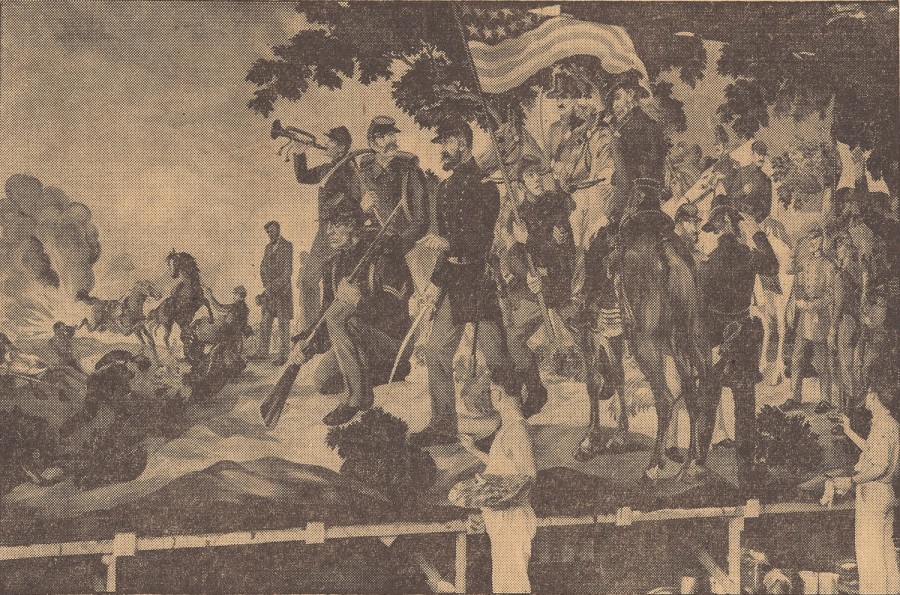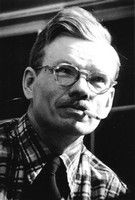Art--3,648 Square Feet of It--Comes to Filter Plant

[larger image]
Frank Imrey (center) puts the finishing touches on the Civil War episode of a 304-foot mural he is painting for the San Francisco World's Fair. His subject is the development of the United States Army and will require plenty of paint and more canvas before he finishes it next December. Working at the right is his assistant, Kenneth Stubbs. By virtue of his connection with the exhibits division of the War Department, Imrey was able to find space enough for the task in an abandoned engine room at the McMillan Filter Plant on Michigan Avenue.
Giant San Francisco Fair Mural Grows in Reservoir Engine Room
Frank Emery, Once Officer in Hungarian Army, Aided by Kenneth Stubbs, of D.C., Doing 3,648 Square-Foot Painting of Army's Evolution
An abandoned engine room in the McMillan Filter Plant on Michigan Avenue has taken on new life during the last few weeks--not as an engine room but as an artist's studio.
The artist is Frank Imrey, Hungarian painter connected with the exhibit division of the War Department. He is working on a gigantic mural painting which, when finished, will cover 3,648 square feet of wall space.
To behung in the Government exhibit at the San Francisco World's Fair next year, the painting depicts the development of the United States Army from Revolutionary days to the present. Assisting Imrey is Kenneth Stubbs, young Washington artist.
Because of limited space in his "studio," Imrey explained, he works on one 30-foot panel at a time. His subject at present is the Civil War, which marks the midway point of the composition and the end of the first 152-foot section. When he finally puts down his brush he will have covered an area 304 feet long and 12 feet high.
"This is the first time the Army has been depicted this way." he said. "Because people aren't much interested in war these days, I'm dramtizing the subject. It won't be just men in uniforms but will have landscapes and villages. Then those who don't like uniforms can look at the landscape."
The scene on which he worked yesterday could be any Civil War battle in generalized form, he went on. Full of action, it includes an exploding shell, frightened horses, two stretcher carriers bearing away a wounded man, a bugler, a young flag-bearer and two mounted officers. He has included Lincoln in the group, but merely for symbolical purposes, he said.
After Imrey was notified his sketches had been selected for the mural, he took two weeks off to study up on the uniforms and stragety used during the different periods. He didn't have to brush up on mural techniques, however, for he has had plenty of experience in the medium.
He is responsible for one of the world's largest murals, that in Convention Hall in Atlantic City. More recently he completed 48 decorative panels for the Hotel New Yorker in New York City. Among his most ambitious works is "Little America," the largest cyclorama ever constructed. It was displayed at the Chicago World's Fair and later circulated among theaters.
Imrey's work has taken him far from his native Hungary. After studies at the Royal Hungarian University of Art Teachers and the School of Master Artists in Budapest, he went to Paris for a year. A lieutenant in the Hungarian Army during the World War, he once was captured by the Russians but managed to escape. After the Armistice he did portrait work in China, India and Japan, then came to Hollywood as art director of First National Pictures.
The author of several books, he also contributes to Hungarian and American periodicals.
Washington Post, August 3, 1938, Section II, p. 15
|

